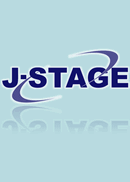All issues

Predecessor
Volume 41, Issue 12
Displaying 1-9 of 9 articles from this issue
- |<
- <
- 1
- >
- >|
-
H. Kasai, T. Oyamoto, K. Yanagibashi, H. Sato2003Volume 41Issue 12 Pages 3-10
Published: December 01, 2003
Released on J-STAGE: April 26, 2013
JOURNAL FREE ACCESS“Sustainable housing Project” aims for the establishment of sustainable Housing, which is long-lived, easy to recycle or reuse, and efficient energy use. In this report, we introduce some of activities of Kajima group and Takenaka group. In Kajima group, monitoring system for RC support which uses optical fiber, and performance evaluation method of recycle building materials are developed. Furthermore, recycle-building materials are studied to apply building construction. In Takenaka group, CFH (Concrete Filled H section) structure, pile reuse technologies, long-lived concrete technologies, carbonation after repairing, and aggregate recycling technologies are developed.View full abstractDownload PDF (18803K) -
M. Tamura, T. Noguchi, F. Tomosawa2003Volume 41Issue 12 Pages 11-17
Published: December 01, 2003
Released on J-STAGE: April 26, 2013
JOURNAL FREE ACCESSNowadays, it is likely to be possible to consider the environmental capacity on the earth when we put industrial activity into practice. As the result, it seems to be difficult to expect the stable and sustainable development of concrete structures from a viewpoint of verifying economic efficiency for producing concrete structures, and it would be necessary for concrete structures to take social equity and environmental prudence into consideration. This papers was illustrated the life cycle design methodology toward resource conservation of concrete constituent materials which was based on the conception of recycle-design strategy for concrete structures and the forward-inverse process production system of concrete structures which was integrated a forward process with a inverse process.View full abstractDownload PDF (1656K) -
E. Sakai, M. Hisada, T. Sugiyama2003Volume 41Issue 12 Pages 18-22
Published: December 01, 2003
Released on J-STAGE: April 26, 2013
JOURNAL FREE ACCESSThis paper summarizes the leaching of trace elements and hydrated products from cement and concrete. Leaching of hydrated products from hardened concrete is very important problem for the construction of the artificial barrier for radioactive waste disposal facilities which is required long-term duarability. The mechanisms and the various models of leaching of hydrated products form hardened concrete and the accelerating test are describes. For environmental compatibility of cement and concrete, the summarize the state of the art for the leaching of trace elements such as Cr (VI) form cement and concrete are necessary. This paper outlines the contents of trace elements of cement and mineral admixtures and endocrine disrupters in chemical admixtures. And the leaching of trace elements from cement and concrete is described. For example, Cr (VI) is detected in fresh concrete. However, the leaching of Cr (VI) form hardened concrete is not observed. In addition. the method for tank leaching test which proposed by technical committee are introduced.View full abstractDownload PDF (913K) -
A. Shimizu, T. Noguchi2003Volume 41Issue 12 Pages 23-29
Published: December 01, 2003
Released on J-STAGE: April 26, 2013
JOURNAL FREE ACCESSJapanese Architectural Standard Specification for reinforced concrete works (JASS 5) was subjected to a minor revision in February 2003 to be harmonized with establishment and amendment of laws, regulations and standards, and technological advance related to reinforced concrete after the previous major revision in 1997. This report summarizes JASS 5-2003.View full abstractDownload PDF (1059K) -
I. Fukushi, H. Sugiyama2003Volume 41Issue 12 Pages 30-35
Published: December 01, 2003
Released on J-STAGE: April 26, 2013
JOURNAL FREE ACCESSThe Japanese architectural standard specification for precast reinforced concrete work (JASS 10) was revised by Architectural Institute of Japan. This paper describes the outline of revision of JASS 10.View full abstractDownload PDF (11181K) -
H. Otsuka, K. Tsukahara, Y. Nakao, Y. Sato2003Volume 41Issue 12 Pages 36-43
Published: December 01, 2003
Released on J-STAGE: April 26, 2013
JOURNAL FREE ACCESSThe Toji-Ohashi has been designed as a 4-span continuous balanced PC arch bridge in Itsuki-mura, Kumamoto Prefecture. The adoption of artificial lightweight aggregate concrete for this bridge is under consideration for the purpose of the cost curtailment by the reducing of bridge weights. In order to apply the high strength lightweight concrete using artificial lightweight aggregate for this bridge, this report investigates the pumpability, and describes the mix design test, the evaluation of pumpability by bleeding test of concrete under pressure, the large scale pumpability tests at the construction site and the check of concrete placing by actual size specimens.View full abstractDownload PDF (1321K) -
T. Ishikura, K. Ohnishi, D. Oguri2003Volume 41Issue 12 Pages 44-52
Published: December 01, 2003
Released on J-STAGE: April 26, 2013
JOURNAL FREE ACCESSThree kinds of high quality recycled aggregate reclamation methods, the heating and grinding method, the mechanical grinding method as well as the screw grinding method, were confirmed their aggregate quality. Recovering from various original concretes, these methods achieved the ordinary aggregate quality standard. Real scale models such as wall models, a building model, mass concrete models etc., demonstrated the recycled aggregate concrete is equivalent performance to the ordinary aggregate concrete.View full abstractDownload PDF (27870K) -
[in Japanese], [in Japanese], [in Japanese], [in Japanese]2003Volume 41Issue 12 Pages 54-59
Published: December 01, 2003
Released on J-STAGE: April 26, 2013
JOURNAL FREE ACCESSDownload PDF (22298K) -
[in Japanese], [in Japanese], [in Japanese], [in Japanese]2003Volume 41Issue 12 Pages 60-66
Published: December 01, 2003
Released on J-STAGE: April 26, 2013
JOURNAL FREE ACCESSDownload PDF (23360K)
- |<
- <
- 1
- >
- >|